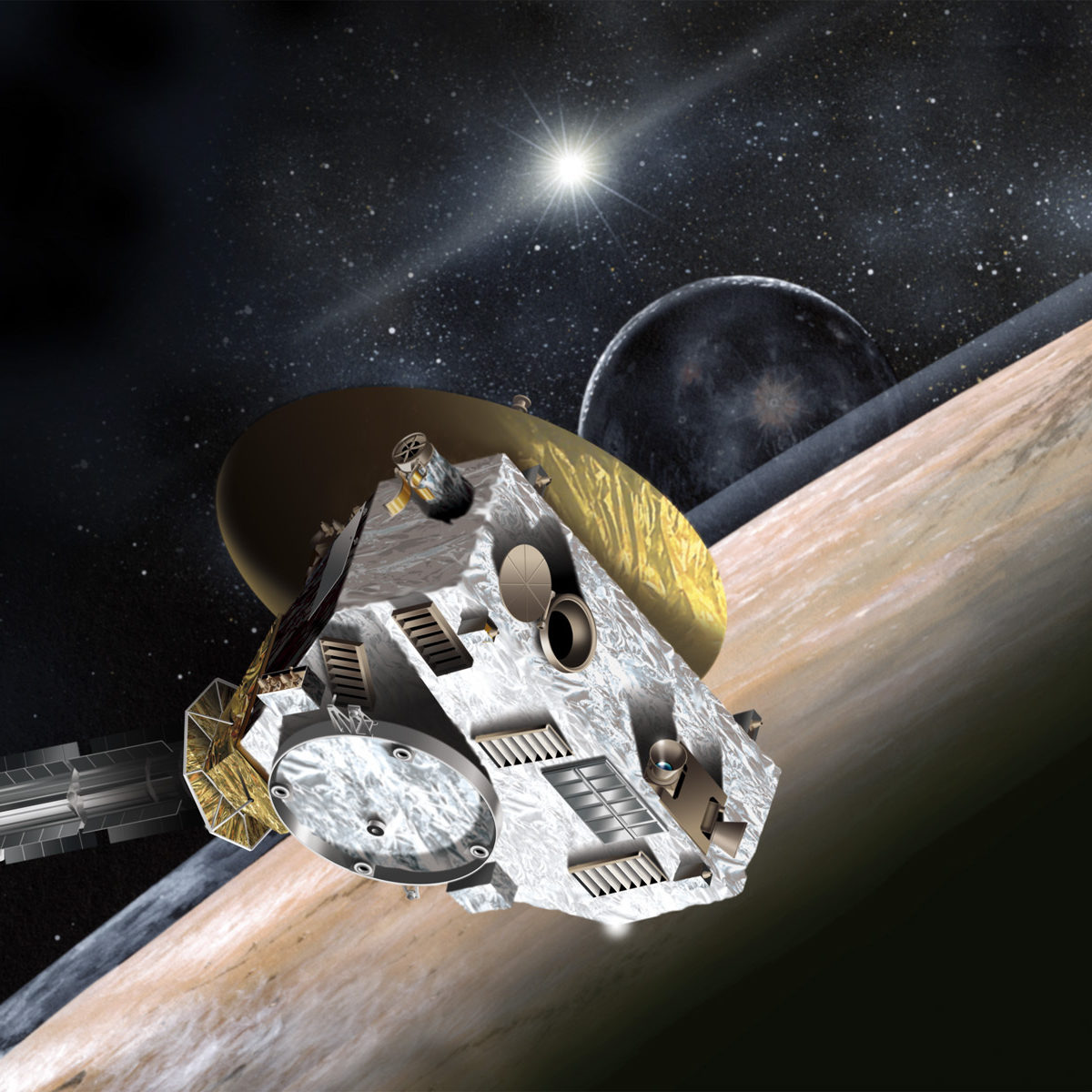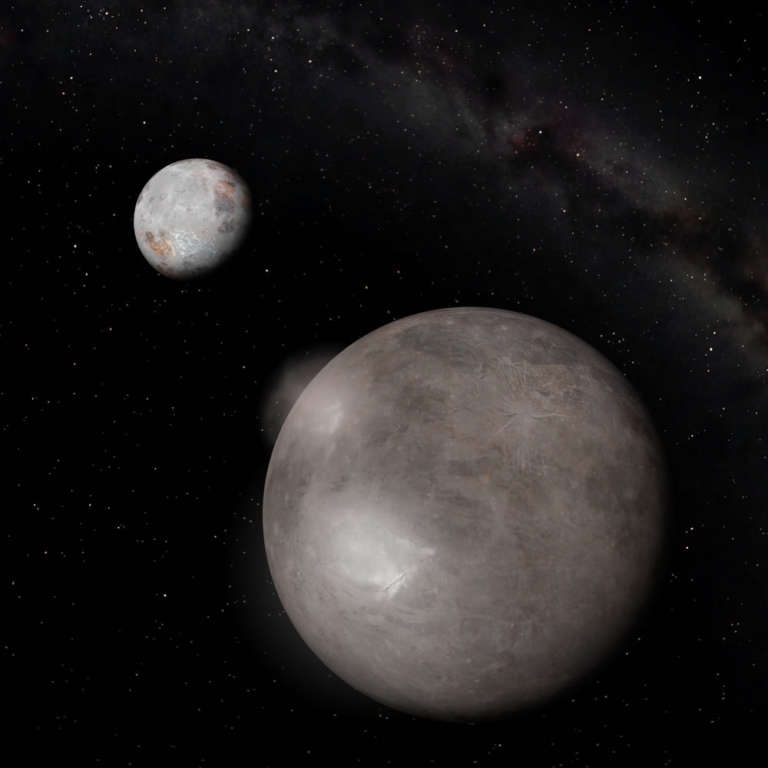All
All
Stories, updates, insights, and original analysis from The Planetary Society.
Pluto's seasons and what New Horizons may find when it passes by
New Horizons might see a Pluto with a northern polar cap, a southern polar cap, or both caps, according to work by Leslie Young.
2011 HM102: A new companion for Neptune
This month my latest paper made it to print in the Astronomical Journal. It's a short piece that describes a serendipitous discovery that my collaborators and I made while searching for a distant Kuiper Belt Object for the New Horizons spacecraft to visit after its 2015 Pluto flyby.
When will New Horizons have better views of Pluto than Hubble does?
Last week, I posted an explainer on why Hubble's images of galaxies show so much more detail than its images of Pluto. Then I set you all a homework problem: when will New Horizons be able to see Pluto better than Hubble does? Here's the answer.
Why can Hubble get detailed views of distant galaxies but not of Pluto?
How come Hubble's pictures of galaxies billions of light years away are so beautifully detailed, yet the pictures of Pluto, which is so much closer, are just little blobs? I get asked this question, or variations of it, a lot. Here's an explainer.
New Contest: Name the Moons of Pluto!
The discoverers of Pluto's fourth and fifth moons are inviting the public to vote on (and write in candidates for) their formal names. Voting closes in two weeks.
Kuiper Belt Objects Submitted to Minor Planet Center
Recently, several of the Kuiper Belt Objects our team has discovered while searching for New Horizons post-Pluto flyby candidates have been submitted to the Minor Planet Center and their orbital information is now in the public domain.
Alan Stern Returns to Planetary Radio
The New Horizons Pluto mission PI provides an update, and introduces his new public project called Uwingu.
DPS 2012: Double occultation by Pluto and Charon
A few talks at last week's Division for Planetary Sciences meeting discussed observations of a double occultation -- both Pluto and Charon passing in front of the same star.
Citizen "Ice Hunters" help find a Neptune Trojan target for New Horizons
2011 HM102 is an L5 Neptune Trojan, trailing Neptune by approximately 60 degrees. This object was discovered in the search for a New Horizons post-Pluto encounter object in the Kuiper Belt.
A fifth moon for Pluto, and a possible hazard for New Horizons
Pluto is now known to have at least five moons (Charon, Nix, Hydra, P4, and the newly discovered P5), and its burgeoning population might pose a risk to New Horizons during its flyby, three years from now.
Salacia: As big as Ceres, but much farther away
A newly published paper shows trans-Neptunian object Salacia to be unexpectedly large; it's somewhere around the tenth largest known thing beyond Neptune. It has a companion one-third its size, making it appear similar to Orcus and Vanth.
What Saturn's moons can tell us about comets (Notes from LPSC 2012)
My notes on a two-part presentation by collaborators Jim Richardson and David Minton about the sizes of things in the Kuiper belt, a story they told by looking at Saturn's moons. How does that work? What connects Saturn's moons to the Kuiper belt is craters.
Where are the big Kuiper belt objects?
Earlier today I wrote a post about how to calculate the position of a body in space from its orbital elements. I'm trying to get a big-picture view of what's going on in trans-Neptunian space.
Visiting the San Diego SpaceUp Unconference
Emily Lakdawalla and I drove down to the 3rd annual San Diego SpaceUp Unconference on February 4. We had great fun hanging out with the other space geeks.
Eris and embargoes (or: don't fear Ingelfinger!)
Last Tuesday at the Division of Planetary Sciences meeting Bruno Sicardy presented the results of his research group's observations of a stellar occultation by Eris.
Brief notes from Day 2 of the DPS-EPSC meeting
It's been a very full day at the DPS-EPSC 2011 joint meeting. My day was less full than it might have been, because I overslept and missed most of the morning's session. I really needed the rest though so I think it was probably for the best!
Scale solar system presentation slide, a provisional version for you to review
I'm preparing a talk for the Pacific Astronomy and Telescope Show here in Pasadena on Sunday afternoon at 1:45. I have spent the morning putting together a slide that I have long wanted to have for presentations.
New Horizons Day 2: Liquids on Pluto's surface?
Jeff Moore's presentation was cool because of the discussion it stimulated. He considered what exogenic processes might be operating on Pluto's surface. What's an exogenic process? It's something that modifies the shape of the surface from the outside, and doesn't require the body to be geologically active inside.
New Horizons Day 2: Tectonic features on icy worlds
The second day of the New Horizons Workshop on Icy Surface Processes was about geology and geophysics. This long post just covers the first talk of that day.
New Horizons workshop, day 1: Chemistry & climate on Pluto & other cold places
Today and tomorrow I'm attending the New Horizons Workshop on Icy Surface Processes. The first day was all about the composition of the surface and atmosphere of Pluto, Charon, Triton, and other distant places.


 Explore Worlds
Explore Worlds Find Life
Find Life Defend Earth
Defend Earth


 Sun
Sun Mercury
Mercury Venus
Venus Earth
Earth Mars
Mars Jupiter
Jupiter Saturn
Saturn Uranus
Uranus Neptune
Neptune Small Bodies
Small Bodies












